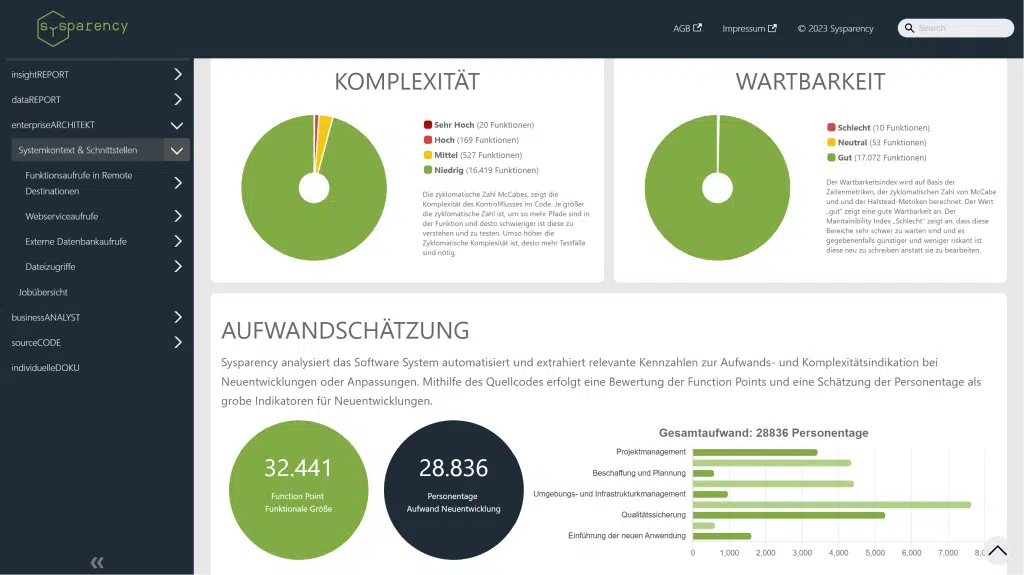Modernization strategy customer planning software for industrial group
The goal of this medium-sized industrial company is to gain competitive advantages through digitization and thus become the market leader. However, the existing specialist applications were outdated and in urgent need of modernization, especially the customer planning software, which was over 10 years old.

Creation of a modernization strategy for the existing customer planning software to bring it up to date and thus ensure the company’s success in the digitalized world.
After a modernization quick check by Sysparency, it was decided to modernize the existing software instead of redeveloping it in order to save time and resources and preserve valuable features already implemented.
Implementation:
Sysparency performed semi-automated documentation of the software, analyzing and documenting core mathematical and technical elements of the software. Sysparency identified mathematical calculations in the source code and extracted them, as well as analyzing existing comments and assigning them to the extracted formulas. In the final step, this information was structured and transferred into the final documentation. The resulting documentation included lists of individual functionalities, short descriptions, flow descriptions and mathematical functions.
In workshops prepared, moderated and followed up by Sysparency experts, functional views and information were collected with responsible know-how carriers and integrated into the documentation.
Results:
The modernization strategy enabled a rapid and efficient upgrade of the customer planning software, which now serves as the central specialist application and forms the basis for digital customer success.
- Savings potential: € 3 million.
- Project costs: € 150.000,-
- Project duration: 3 months
Added value:
- Value preservation: Modernization preserved exceptional features already implemented and prevented waste of resources through new development.
- Speed: The modernization was implemented in a very short time, which enabled rapid integration into the business processes.
- Detailed documentation: Semi-automated documentation was used to create comprehensive, structured and traceable documentation of the software.
- Clarity and structure: The workshops and the documentation produced created clarity and structure about the various functionalities and processes of the software.
The cooperation with Sysparency enabled the industrial company to carry out a targeted and efficient modernization of the customer planning software. The clear focus on value preservation and structured, detailed documentation has created a solid foundation for future developments and success in the digitalized world.
Interested or have further questions?
Arrange a no-obligation initial consultation with our SYSPARENCY experts.
We will introduce you to our products and answer all your questions in a straightforward online meeting.
